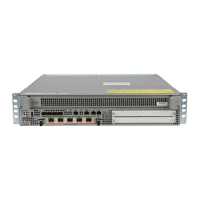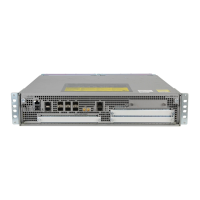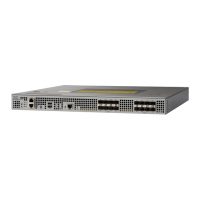A PFM process gets and caches performance data from a PFA every 10 seconds. Every PFM entity shares
the cached tables as the latest data source.
How to Configure the Performance Manager
Configuring the Performance Manager on a DC-Facing PE
The performance subsystem (PFS) on a DC-facing PE runs the PFM only. It sends all received requests to a
CE-facing PE for processing. The PFM on a DC-facing PE is responsible to:
• Receive requests from the SRE.
• Locate the corresponding CE-facing PE, from which it receives performance data through the Extensible
Messaging and Presence Protocol (XMPP).
• Send the final performance data to the SRE.
Configure the PFM on all DC-facing PEs.
SUMMARY STEPS
1.
xmpp server type pfm hostname
2.
pfm local-host ip-address
3.
pfm dce-facing
DETAILED STEPS
PurposeCommand or Action
Specifies the name of the XMPP server for PFM.
xmpp server type pfm hostname
Example:
xmpp server type pfm ccnsr.com
Step 1
Arbitrarily specifies the IP address to get to one of the DCs;
this value is used to generate a jabber ID for XMPP
communication.
pfm local-host ip-address
Example:
(config)# pfm local-host 10.4.1.1
Step 2
Enables the performance manager running in a DCE-facing
PE.
pfm dce-facing
Example:
(config)# pfm dce-facing
Step 3
What to Do Next
Configure all CE-facing PEs.
Cisco Network Positioning System Configuration Guide for the Cisco ASR 1000 Router, Release 1.0
14 OL-25794-01
Configuring Performance Metrics to Select a Service
How to Configure the Performance Manager

